As far-fetched as this whole idea sounds, I must admit that I find myself fascinated by it. Perhaps this has to do with the fact that I love chicken, or that I have a penchant for spicy food (after all, I am originally from Africa). Or still, perhaps it is because I just love the idea of ‘pushing boundaries’, taking risks and being innovative, even if doing so may generate more questions than answers. Questions such as:
- What specific channels of distribution KFC plans to use for marketing this product? I mean, when they decide to start mass-producing this thing, will it be only sold in KFC restaurants along with their chicken meals (i.e., “Would you like some nail polish with your meal, Sir/M’am?”), or will it be available exclusively in cosmetic/beauty retail stores, or both?
- Who exactly is the target segment for this product? Is it only for women, or is it a “unisex” product? After all, the promotional music video released on YouTube shows a woman licking her fingers (while sitting on a pillar), and a man busting some serious robot-dance moves while showing off his Hot & Spicy KFC nail polish.
- Should you have any interest in this product, would you want it to remain on your fingers? And for how long? Indefinitely? How often would you be expected to lick your fingers during the course of a day?
In the final analysis, it should be noted that this is not the first time (and certainly not the last) that a company has come up with ‘creative’ or ‘unorthodox’ products. A quick online search can reveal the extent of these types of products, and out of curiosity, have you ever wondered about what the combination of just a handful of these products would look like?
Perhaps I shall attempt to illustrate with a picture …
Imagine a rainy morning in Hong Kong. A young, fashion-conscious female professional has just got off the train and is walking the remaining few blocks to work. Anticipating a parti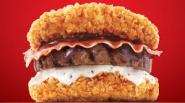 cularly busy and important day ahead of her, she ensures that no details are left unattended about her overall countenance by completing her makeup with her favorite Hot & Spicy KFC nail polish (which she purchased the weekend before at her favorite cosmetic retail store). Being an avid chicken lover, and of course a loyal KFC customer, she stops to pick up her usual KFC chicken sandwich, the kind made with chicken buns, also known a
cularly busy and important day ahead of her, she ensures that no details are left unattended about her overall countenance by completing her makeup with her favorite Hot & Spicy KFC nail polish (which she purchased the weekend before at her favorite cosmetic retail store). Being an avid chicken lover, and of course a loyal KFC customer, she stops to pick up her usual KFC chicken sandwich, the kind made with chicken buns, also known a s the “Double Down”. She is well protected from the rain with a hands-free, full body umbrella, to ensure her nail polish stays dry while she works on her sandwich. Later, during the high-power business meeting she was attending, she met some new clients and established contact with them by handing out her rather unique business (read: m
s the “Double Down”. She is well protected from the rain with a hands-free, full body umbrella, to ensure her nail polish stays dry while she works on her sandwich. Later, during the high-power business meeting she was attending, she met some new clients and established contact with them by handing out her rather unique business (read: m
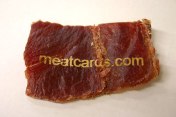 eat) cards. Due to the high stress of the day, she found herself licking her fingers “again and again and again” throughout the course of the day, so much so that b
eat) cards. Due to the high stress of the day, she found herself licking her fingers “again and again and again” throughout the course of the day, so much so that b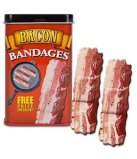 y the time she got home, she discovered, to her dismay, that she had bitten into one of her fingers unknowingly. But not to worry, she’s well stocked up with bacon bandages that are readily available on amazon. Finally, before turning in for the night following another successful day, she will make sure that, included in her nightly hygiene routine, she brushes her teeth with her unique bacon-flavored toothpaste.
y the time she got home, she discovered, to her dismay, that she had bitten into one of her fingers unknowingly. But not to worry, she’s well stocked up with bacon bandages that are readily available on amazon. Finally, before turning in for the night following another successful day, she will make sure that, included in her nightly hygiene routine, she brushes her teeth with her unique bacon-flavored toothpaste.
Now that, in my opinion, is the ultimate genius of innovation all in one package
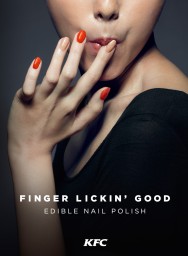 n Colbert, or pretty much any news outlets). The product, uhmm, nail polish, developed in collaboration with a marketing agency, is said to be made of all-natural ingredients, and it comes in two distinct flavors and colors: “Original Recipe” in beige color, and “Hot and Spicy” in red. For now, this campaign is limited only to the Hong Kong market.
n Colbert, or pretty much any news outlets). The product, uhmm, nail polish, developed in collaboration with a marketing agency, is said to be made of all-natural ingredients, and it comes in two distinct flavors and colors: “Original Recipe” in beige color, and “Hot and Spicy” in red. For now, this campaign is limited only to the Hong Kong market.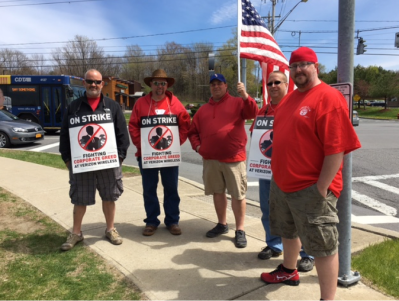
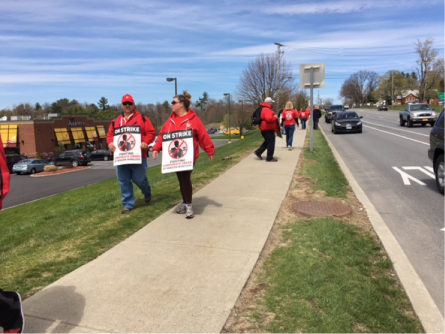
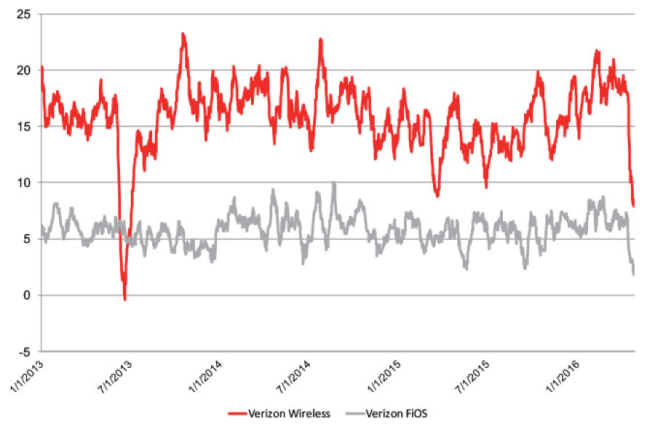
 The other day, I went to the Donald Trump campaign rally in Albany, my very first experience going to a campaign event. I did not go because I am a republican — I am not. Nor did I go because I like Donald Trump — let’s just say, respectfully, that I would never vote for him! I did not attend either because I was paid to show up and help build up a crowd in the Times Union Arena for the perfect ambience the candidate is looking for.
The other day, I went to the Donald Trump campaign rally in Albany, my very first experience going to a campaign event. I did not go because I am a republican — I am not. Nor did I go because I like Donald Trump — let’s just say, respectfully, that I would never vote for him! I did not attend either because I was paid to show up and help build up a crowd in the Times Union Arena for the perfect ambience the candidate is looking for.